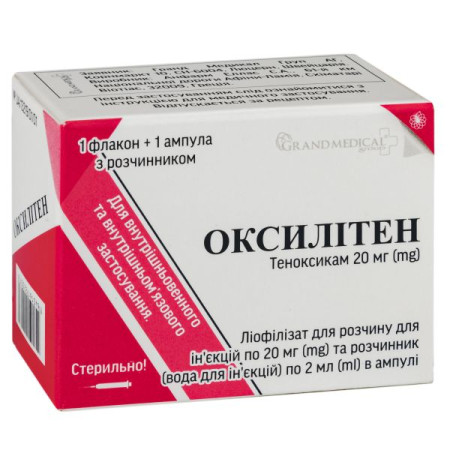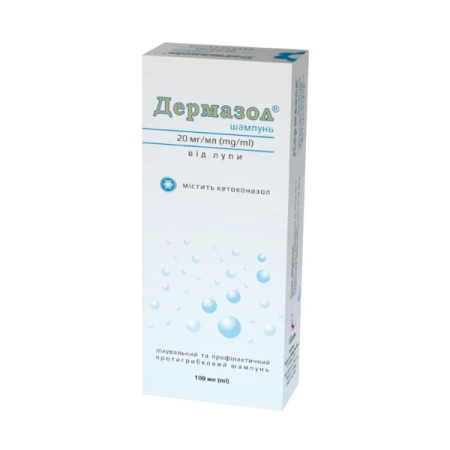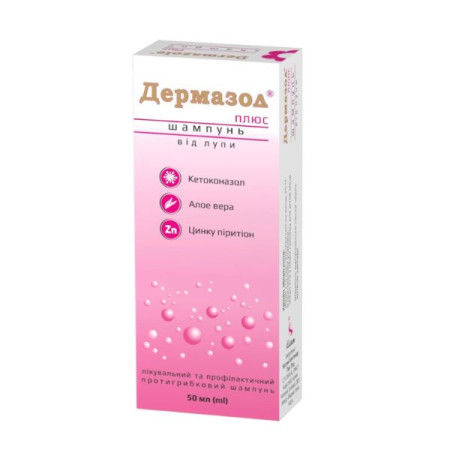Novocaine-Darnitsa solution for injection 5 mg/ml ampoule 5 ml No. 10

Instructions for use Novocain-Darnitsa solution for injection 5 mg/ml ampoule 5 ml No. 10
Composition
active ingredient: procaine;
1 ml of solution contains: novocaine (procaine hydrochloride) 5 mg;
Excipients: hydrochloric acid, water for injection.
Dosage form
Solution for injection.
Main physicochemical properties: clear colorless liquid.
Pharmacotherapeutic group
Local anesthetics. ATX code N01B A02.
Pharmacological properties
Pharmacodynamics
Local anesthetic with moderate activity and a wide spectrum of therapeutic action. The mechanism of anesthetic action is associated with the blockade of sodium channels, inhibition of potassium current, competition with calcium, reduction of the surface tension of the phospholipid layer of membranes, inhibition of redox processes and generation of impulses. When entering the blood, it reduces the formation of acetylcholine, reduces the excitability of peripheral cholinergic systems, exhibits a blocking effect on vegetative ganglia, reduces spasms of smooth muscles, reduces the excitability of the cardiac muscle and motor zones of the cerebral cortex.
Pharmacokinetics
When administered parenterally, it is well absorbed. The degree of absorption depends on the site and route of administration (especially on vascularization and blood flow velocity at the injection site) and the final dose (amount and concentration). It is rapidly hydrolyzed by esterases and cholinesterases of plasma and tissues with the formation of two main pharmacologically active metabolites: diethylaminoethanol (has a moderate vasodilator effect) and para-aminobenzoic acid (is a competitive antagonist of sulfonamide chemotherapeutic drugs and can weaken their antimicrobial effect). The half-life is 30-50 seconds, in the neonatal period - 54-114 seconds. It is excreted mainly by the kidneys in the form of metabolites (80%); no more than 2% is excreted unchanged.
Poorly absorbed by mucous membranes.
Indication
Local and infiltration anesthesia, therapeutic blockades.
Contraindication
Increased individual sensitivity to the drug.
Myasthenia gravis; arterial hypotension; purulent process at the injection site; urgent surgical interventions accompanied by acute blood loss; pronounced fibrous changes in tissues (for anesthesia by the method of creeping infiltrate).
Interaction with other medicinal products and other types of interactions
Prolongs neuromuscular blockade caused by suxamethonium (since both drugs are hydrolyzed by plasma cholinesterase).
Concomitant use with MAO inhibitors (furazolidone, procarbazine, selegiline) increases the risk of developing arterial hypotension.
Anticholinesterase drugs increase the toxicity of procaine (inhibit its hydrolysis). The drug reduces the effect of anticholinesterase drugs on neuromuscular transmission. Cross-sensitization is possible.
The metabolite of procaine (para-aminobenzoic acid) is a competitive antagonist of sulfonamide drugs and may weaken their antimicrobial effect.
Potentiates the effect of direct anticoagulants.
Intravenous administration of novocaine potentiates the effect of anesthetics.
Application features
To reduce absorption and prolong the effect of novocaine solutions during local anesthesia, an adrenaline hydrochloride solution (0.1%) should be added to them - 1 drop per 2 or 5 or 10 ml of novocaine solution.
To prevent adverse reactions, a tolerance test should first be performed, as evidenced by swelling and redness at the injection site. If a positive reaction occurs, procaine should not be used.
When using the drug, it is necessary to monitor the functions of the cardiovascular, respiratory and central nervous systems. The drug should be prescribed with caution in severe heart diseases (blockades, rhythm disturbances, especially bradycardia), liver and kidney diseases, and a history of allergies.
When performing local anesthesia, the toxicity of procaine is higher with the same total dose, the higher the concentration of the solution used. Therefore, with increasing solution concentration, the total dose must be reduced or the drug solution diluted to a lower concentration with sterile isotonic sodium chloride solution.
The drug should be used with caution in conditions accompanied by decreased hepatic blood flow, progression of cardiovascular failure (usually due to the development of heart block and shock), inflammatory diseases, pseudocholinesterase deficiency, renal failure, in elderly patients (aged 65 and over), seriously ill, debilitated patients, during pregnancy or breastfeeding, and during childbirth.
Use during pregnancy or breastfeeding
Use during pregnancy is possible provided it is well tolerated.
During breastfeeding, the use of the drug is possible after a thorough assessment of the expected benefit of therapy for the mother and the potential risk to the infant.
When used during childbirth, bradycardia, apnea, and seizures may develop in the newborn.
Ability to influence reaction speed when driving vehicles or other mechanisms
During the treatment period, caution should be exercised when driving vehicles and engaging in other potentially dangerous activities that require increased concentration and speed of psychomotor reactions.
Method of administration and doses
With local anesthesia, the dose of the drug depends on the concentration, nature of the surgical intervention, method of administration, condition and age of the patient. With paranephral blockade, adults should inject 50-70 ml of 0.5% (5 mg/ml) novocaine solution into the perirenal tissue. For infiltration anesthesia, the following highest doses are established (for adults): the first single dose at the beginning of the operation is no more than 0.75 g (i.e. 150 ml of 0.5% novocaine solution). In the future, during each hour of the operation, no more than 2 g (i.e. 400 ml of 0.5% novocaine solution).
Children
Use by children is prohibited.
Overdose
Overdose is possible only when using the drug in high doses.
Symptoms: pallor of the skin and mucous membranes, dizziness, nausea, vomiting, increased nervous excitability, "cold" sweat, tachycardia, decrease in blood pressure almost to the point of collapse, tremor, convulsions, apnea, methemoglobinemia, respiratory depression, sudden cardiovascular collapse.
The effect on the central nervous system is manifested by a feeling of fear, hallucinations, convulsions, and motor agitation.
Treatment. In cases of overdose, the drug should be stopped immediately. General resuscitation measures should be carried out, including oxygen inhalation, and if necessary, artificial ventilation of the lungs. If convulsions last more than 15-20 seconds, they should be stopped by intravenous administration of thiopental (100-150 mg) or diazepam (5-20 mg). In case of arterial hypotension and/or myocardial depression, intravenous administration of ephedrine (15-30 mg) is recommended, in severe cases, detoxification and symptomatic therapy should be carried out.
When performing local anesthesia, the injection site can be pricked with adrenaline. In the event of intoxication after injection of novocaine into the muscles of the leg or arm, a tourniquet should be urgently applied to reduce further entry of the drug into the general bloodstream.
Adverse reactions
Novocaine is usually well tolerated, but sometimes the following side effects are possible.
From the side of the central and peripheral nervous system: headache, dizziness, drowsiness, weakness, motor restlessness, loss of consciousness, convulsions, trismus, tremor, visual and auditory disturbances, nystagmus, cauda equina syndrome (paralysis of the legs, paresthesias), paralysis of the respiratory muscles, motor and sensory block, return of pain, persistent anesthesia.
Cardiovascular system: increase or decrease in blood pressure, peripheral vasodilation, collapse, bradycardia, arrhythmias, chest pain.
From the urinary system: involuntary urination.
On the part of the digestive system: nausea, vomiting, involuntary defecation.
From the blood system: methemoglobinemia.
On the part of the immune system: skin itching, skin rashes, dermatitis, skin peeling, hyperemia, other anaphylactic reactions (including angioedema, anaphylactic shock), urticaria (on the skin and mucous membranes).
Changes at the injection site: when treating the injection site with disinfectant solutions containing heavy metals, the risk of developing a local reaction in the form of soreness and swelling increases.
Other: hypothermia.
Expiration date
3 years.
Storage conditions
Store in the original packaging at a temperature not exceeding 25 ° C. Do not freeze.
Keep out of reach of children.
Packaging
2 ml or 5 ml in an ampoule; 10 ampoules in a box; 5 ampoules in a contour blister pack; 2 contour blister packs in a pack.
Vacation category
According to the recipe.
Producer
PrJSC "Pharmaceutical Company "Darnitsa".
Location of the manufacturer and its business address
Ukraine, 02093, Kyiv, Boryspilska St., 13.
There are no reviews for this product.
There are no reviews for this product, be the first to leave your review.
No questions about this product, be the first and ask your question.













